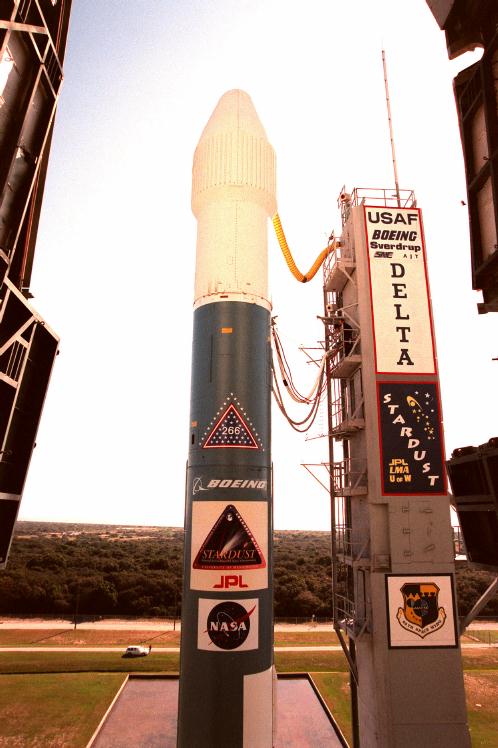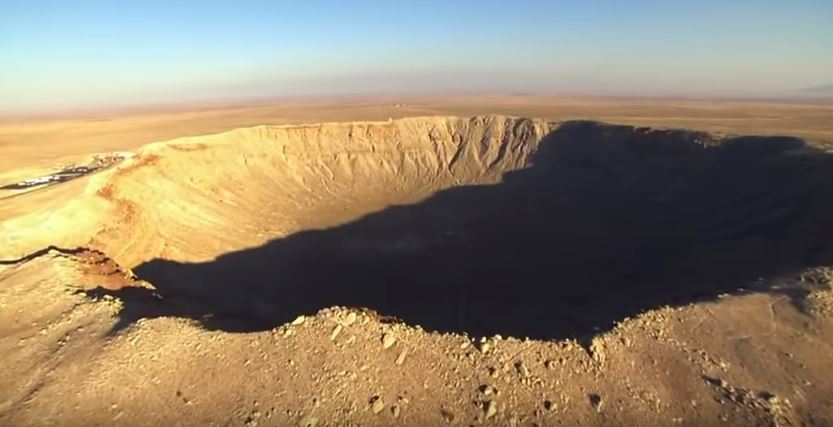It looks like you're using an Ad Blocker.
Please white-list or disable AboveTopSecret.com in your ad-blocking tool.
Thank you.
Some features of ATS will be disabled while you continue to use an ad-blocker.
6
share:
Earth is estimated to be 4.543 Billion's of Earth years old just over 1/3 of the age of Our Galaxy the Milky Way which is Estimated to be 13.21
Billion's of Earth years old. The Universe at over 13.7 Billion's of our years old is as far back as we have as yet realized..
Five Billion years ago there was no Earth until it was created with a violent dancing and embrace of dust, meteorites, comets and perhaps even other smaller planets..
A published today article in the daily Galaxy gives a scientific evaluation worthy of a peep..

www.dailygalaxy.com...

stardust.jpl.nasa.gov...
Five Billion years ago there was no Earth until it was created with a violent dancing and embrace of dust, meteorites, comets and perhaps even other smaller planets..
A published today article in the daily Galaxy gives a scientific evaluation worthy of a peep..

"By analyzing interstellar dust, we can understand our own origins," said Andrew Westphal, a planetary scientist at the University of California at Berkeley. "Just as people go to Africa to look for fossil hominids, say, 4.5 million years old, trying to understand the origins of humanity, we want to look at stuff that helped form the solar system 4.5 billion years ago." The image at the top of the page image shows a diffraction pattern from the first interstellar dust candidate the Comet Orion, collected by NASA's Stardust spacecraft in 2004 (which we're posting as a companion to today's fascinating feature: Life In the Universe --"Precursor Molecules to DNA Could Have Been Delivered Millions of Years Ago")
www.dailygalaxy.com...

STARDUST MISSION STATUS February 7, 1999 NASA's Stardust spacecraft successfully shot into a clear blue sky atop a Delta II rocket from Florida's Cape Canaveral Air Station at 4:04:15 p.m. EST (1:04:15 p.m. PST) today to become the first U.S. mission destined for a comet, and the first-ever spacecraft sent to bring a sample of a comet sample back to Earth.
The primary goal of the Stardust mission was to collect samples of a comet and return them to Earth for laboratory analysis. Comets are ancient bodies of frozen ice and dust that formed beyond the orbit of the most distant planet. They were expected to contain materials that the solar system formed from, preserved in ice for billions of years. When the international team of 200 scientists began examination of the returned particles, we found that the particles were indeed ancient building blocks of the solar system but the nature and origin of the particles was quite unexpected. Before the mission, there were very good reasons to believe that we knew what comets would be made of and there was a general expectation was that the particles collected from comet Wild 2 would be mainly be dust that formed around other stars, dust that was older than the Sun. Such particles are called stardust or pre-solar grains and this was the main reason why the mission was named Stardust.
stardust.jpl.nasa.gov...
a reply to: skywatcher44
Interesting thread that really makes me think about our significance in the universe.
Thanks for sharing! I have ALWAYS wondered how the heck scientist can come up with things like "earth is 4.543 billion years old" and even more so, "The Milky Way is estimated to be 13.21 Billion's of Earth years old... The Universe is estimated to be 13.7 Billion"
X-Rays, Red and Blue light spectrum, geologic conditions, etc. It sounds and looks okay on paper but how the heck are they so confident in those numbers? ANY insights into this would be very much appreciated.
I see it in archaeology a LOT though - the intellectuals and "top names" in the field stick to the textbook stories and dislike it when people begin to go past a certain point (typically past 6,000 BC, depending on which civilizations we are talking about) and are so stubborn to even investigate the possibility of certain sites being older than "X".
Carbon Dating? I've also heard that's not that accurate because they are often measuring the carbon in rocks etc. but that still doesn't take into consideration hundreds of other factors that could be important. Anyway, not trying to de-rail the thread or anything just extremely curious about how scientists are so confident in these numbers, especially when it comes to "earth's creation", the Galaxy, Universe, Billions of years, etc.
Thanks in advance my fellow ATS members - you guys amaze me
Interesting thread that really makes me think about our significance in the universe.
Thanks for sharing! I have ALWAYS wondered how the heck scientist can come up with things like "earth is 4.543 billion years old" and even more so, "The Milky Way is estimated to be 13.21 Billion's of Earth years old... The Universe is estimated to be 13.7 Billion"
X-Rays, Red and Blue light spectrum, geologic conditions, etc. It sounds and looks okay on paper but how the heck are they so confident in those numbers? ANY insights into this would be very much appreciated.
I see it in archaeology a LOT though - the intellectuals and "top names" in the field stick to the textbook stories and dislike it when people begin to go past a certain point (typically past 6,000 BC, depending on which civilizations we are talking about) and are so stubborn to even investigate the possibility of certain sites being older than "X".
Carbon Dating? I've also heard that's not that accurate because they are often measuring the carbon in rocks etc. but that still doesn't take into consideration hundreds of other factors that could be important. Anyway, not trying to de-rail the thread or anything just extremely curious about how scientists are so confident in these numbers, especially when it comes to "earth's creation", the Galaxy, Universe, Billions of years, etc.
Thanks in advance my fellow ATS members - you guys amaze me
a reply to: FamCore
The embedded National geographic you tube is well worth a watch and explains the research nicely..
Or go to 52m within the video it explains the findings within the Arizona Barringer crater.

www.amusingplanet.com...
The embedded National geographic you tube is well worth a watch and explains the research nicely..
Or go to 52m within the video it explains the findings within the Arizona Barringer crater.

www.amusingplanet.com...
edit on 8 4 2016 by skywatcher44 because: Added more
a reply to: skywatcher44
Great to hear - I can't watch the video until tonight since this computer has no sound and I couldn't find the button for ClosedCaptioning.
Thanks for mentioning - looking forward to hearing about it
Great to hear - I can't watch the video until tonight since this computer has no sound and I couldn't find the button for ClosedCaptioning.
Thanks for mentioning - looking forward to hearing about it
new topics
-
America's Greatest Ally
General Chit Chat: 23 minutes ago -
President BIDEN's FBI Raided Donald Trump's Florida Home for OBAMA-NORTH KOREA Documents.
Political Conspiracies: 5 hours ago -
Maestro Benedetto
Literature: 6 hours ago -
Is AI Better Than the Hollywood Elite?
Movies: 7 hours ago -
Las Vegas UFO Spotting Teen Traumatized by Demon Creature in Backyard
Aliens and UFOs: 10 hours ago -
2024 Pigeon Forge Rod Run - On the Strip (Video made for you)
Automotive Discussion: 11 hours ago -
Gaza Terrorists Attack US Humanitarian Pier During Construction
Middle East Issues: 11 hours ago
top topics
-
President BIDEN's FBI Raided Donald Trump's Florida Home for OBAMA-NORTH KOREA Documents.
Political Conspiracies: 5 hours ago, 26 flags -
Krystalnacht on today's most elite Universities?
Social Issues and Civil Unrest: 16 hours ago, 9 flags -
Gaza Terrorists Attack US Humanitarian Pier During Construction
Middle East Issues: 11 hours ago, 8 flags -
Supreme Court Oral Arguments 4.25.2024 - Are PRESIDENTS IMMUNE From Later Being Prosecuted.
Above Politics: 16 hours ago, 8 flags -
Weinstein's conviction overturned
Mainstream News: 15 hours ago, 8 flags -
Massachusetts Drag Queen Leads Young Kids in Free Palestine Chant
Social Issues and Civil Unrest: 13 hours ago, 7 flags -
Las Vegas UFO Spotting Teen Traumatized by Demon Creature in Backyard
Aliens and UFOs: 10 hours ago, 6 flags -
Meadows, Giuliani Among 11 Indicted in Arizona in Latest 2020 Election Subversion Case
Mainstream News: 13 hours ago, 5 flags -
2024 Pigeon Forge Rod Run - On the Strip (Video made for you)
Automotive Discussion: 11 hours ago, 4 flags -
Is AI Better Than the Hollywood Elite?
Movies: 7 hours ago, 3 flags
6
